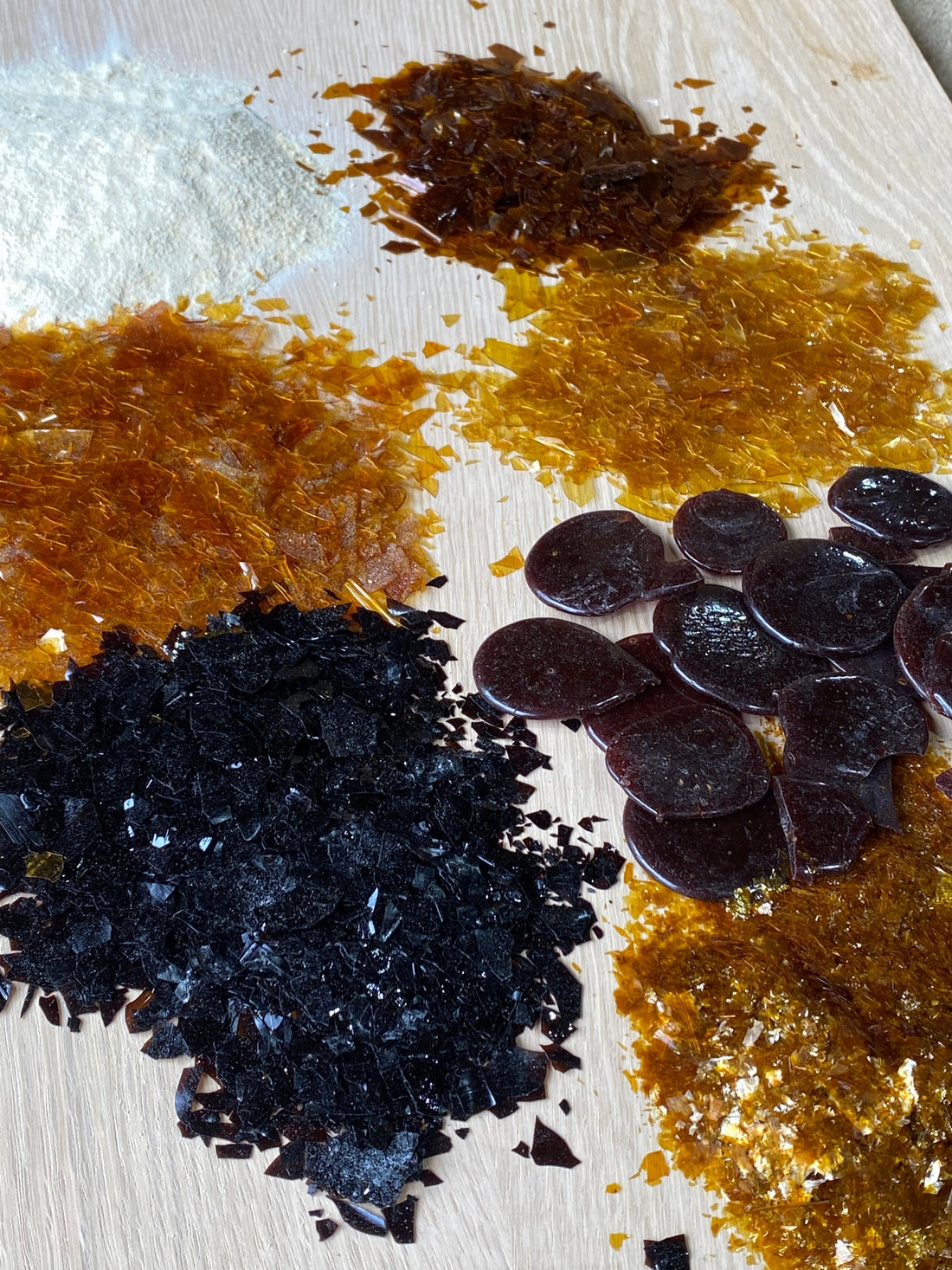Shellac has been a go-to finish for woodworkers and restorers for centuries, particularly in the art of French polishing. Renowned for its warm, lustrous sheen and deep, rich glow, shellac remains a top choice for those seeking a traditional, high-quality finish. In this guide, we’ll explore what shellac is, how to choose the right type for your project, the correct mixing ratios, and the importance of using high-quality denatured alcohol for the best results.
What is Shellac?
Shellac is a natural resin secreted by the lac bug, primarily found in India and Thailand. Once harvested and processed, it is formed into flakes, which are then dissolved in alcohol to create a wood finish. Shellac is valued for its quick drying time, excellent adhesion, and ability to enhance the natural beauty of wood. It also offers good protection against moisture and everyday wear while being easily repairable—a key advantage over modern finishes.

Choosing the Right Shellac for Your Project
One of the most common questions when using shellac is: "Which type should I use?" The answer depends on your project, the type of wood you're working with, and the final look you want to achieve. Different shellac varieties offer different colours, transparency levels, and workability. Below is a detailed breakdown to help you make the best choice.
1. Blonde and Super Blonde Shellac
- Best for light-coloured woods like maple, pine, and birch.
- Maintains the natural colour of the wood with minimal tinting.
- Ideal for modern or contemporary furniture where a clear finish is desired.
- Great as a universal sealer before applying other finishes.
2. Garnet Shellac
- A darker, richer shellac ideal for enhancing deeper wood tones.
- Works beautifully on mahogany, walnut, and rosewood.
- Adds warmth and depth, making it popular for antique restoration.
3. Amber (lemon) Shellac
- Provides a golden, warm hue that enhances vintage aesthetics.
- Ideal for oak, cherry, and other medium-to-dark woods.
- Often used in restoration projects where an aged look is preferred.
4. White Shellac (Bleached Shellac)
- Contains no natural wax, making it compatible with modern topcoats like polyurethane.
- Works well as a sanding sealer to provide a smooth base for other finishes.
- Preferred for French polishing when layering with different finishes.
5. Waxed Shellac (Waxy orange & Waxy button)
- A traditional choice for hand-rubbed finishes, retaining its natural wax content.
- Produces a softer, more natural finish with a classic appeal.
- Less compatible with certain modern finishes, so best used alone or with traditional methods.
How to Decide
If you want to maintain the natural colour of your wood, go with Blonde or White Shellac. If you’re restoring antiques or prefer a deeper, aged look, Garnet or lemon Shellac will give you rich, warm tones. If you need a base coat for another finish, Dewaxed White Shellac is the safest option.

Mixing Ratios for Different Applications
The ratio of shellac flakes to alcohol determines the thickness and application method of your mixture. Here’s a guide to common cuts:
-
2 lb Cut (Standard Application) – 2 lbs of shellac flakes per gallon of alcohol. This is a good all-purpose ratio for French polishing and brush application.
(Approx. 0.9 kg of shellac flakes per 3.8 liters of alcohol) -
1 lb Cut (Thin Application) – 1 lb of flakes per gallon. Ideal for sealing, priming, or spraying.
(Approx. 0.45 kg of shellac flakes per 3.8 liters of alcohol) -
3 lb Cut (Thicker Application) – 3 lbs of flakes per gallon. Best for building layers quickly or when using a pad for hand-rubbed applications.
(Approx. 1.36 kg of shellac flakes per 3.8 liters of alcohol)
To mix, weigh out the desired amount of shellac flakes, add them to a container, and pour in the correct amount of alcohol. Stir or shake occasionally until fully dissolved (this can take a few hours to a day, depending on flake size and alcohol quality).

Why High-Quality Denatured Alcohol Matters
The quality of alcohol used to dissolve shellac significantly affects the final finish. Lower-grade methylated spirits often contain impurities that slow drying, create cloudiness, or leave unwanted residues. For the best results, opt for:
- High-purity denatured alcohol (95% or higher) to ensure a clean, fast-drying mix.
- Low-water content to prevent issues like poor adhesion and hazing.
- Minimal additives to avoid contamination of the shellac solution.
Using high-quality alcohol ensures a smoother application, faster drying times, and a more durable finish.
Conclusion
Shellac remains a timeless and versatile finish, offering unparalleled beauty and workability. By selecting the right type, mixing it correctly, and using high-quality alcohol, you can achieve professional results in your French polishing projects. Whether you’re restoring antiques or finishing new furniture, mastering shellac will take your craftsmanship to the next level.
Need high-quality shellac flakes and premium methylated spirits? Start browsing our products here!


